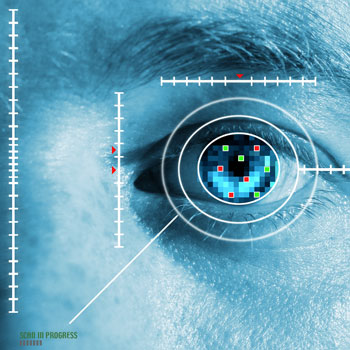By Judith E. Glaser and Mary Ann Somerville | huffingtonpost.com
Published: August 9, 2013

At the core of every endeavor, relationship and communication is a personal, mystifying and sometimes paralyzing question, Who am I?
Lack of awareness of our personal identity can lead to broken relationships, the inability to collaborate creatively and effectively, a lack of confidence, and unnecessary personal stress. Access to our innate leadership skill may also be diminished in group interactions as we adapt to the people around us.
The breakdown that occurs in most teams (early in the process) is created by the dynamic tensions inside people as they struggle with the Who Am I question while integrating into a team of We.
This Who am I within the We question is vital to leaders who hope to build healthy, thriving, and productive organizations -- since most of the work gets done through a team. But, when we least expect it, our personal identity can be threatened and leave us vulnerable and incapacitated, activating the limbic brain, limiting our choices to flight, fight or freeze.
Have you ever found yourself in this situation? You want to support your team, and you're trying to navigate the conversation and be helpful. When you hear an idea you like, or see a chance to add something new, you share it. Then someone says: "That's a stupid idea -- we tried that before and it failed."
When you hear the words stupid and failed, you have an emotional reaction. Instantly, a switch is turned on in your brain. You feel betrayed. You tune out of the meeting and ruminate. The team thinks you are still there, but in fact, most of you has left the meeting.
Your body freezes up. You can't find words to respond. Your attention is now turned inside to your silent conversation with yourself about being stupid and failing. You can't believe he said that to you. You were so sure of your opinion; it represented your truth and until now, you trusted your gut instincts. Yet in one moment your whole mindset shifted from trust to distrust.
This story is a synthesis of many that come from our consulting. So many people think they're in good stead with a colleague only to find that when threatening dynamics are at play, a friend appears to turn into a foe overnight.
Our personal answer to the Who Am I question is vital, and our answer to the question Who Am I within the WE deserves attention as well.
Identity Is Our Core
At the core our identity is the foundation of how we see ourselves in the context of our relationships with others. When we are secure in our identity, our sense of self-trust grows. And yet, no matter how secure we think we are, we can be shaken from time to time. Why?
Our identity lives deep within our subconscious and unconscious mind, as a set of unexamined beliefs, expectations, and assumptions about who we think we are and need to be and who we think others are and should be.
Research at the Harvard Negotiation Project indicates that everyone is subject to unexpected Identity Threats that trigger us back into unconscious behaviors that originate in the past. When our identity is threatened, our purpose shifts from problem solving, innovation, and relationship building to an impulsive need to defend, protect, or withdraw.
Leadership mastery, the ability to move authentically within the I and We, requires us to discover our personal and actualized self-identity strengths, weaknesses, beliefs, and rules in relationship to others as well as reliable best practices to help us regain balance when threatened by unexpected identity issues.
Perceived threat activates the Amygdala and Limbic Brain. The symptoms include: a sense of threat, confusion, exaggerated internal self-talk including projected blame or unjustifiable self-criticism, heart palpitations, sweating, incapacity to articulate our thoughts or feelings etc.
Here are seven Universal THREATS that give us an Amygdala Hijack: 1) Tone Threat -- judgmental or angry tone is felt as threats to our ego; 2) Hurt Threat -- threat to our physical safety; 3) Risk and punishment Threat -- taking risks, fear of failure and making mistakes; 4) Exclusion Threat -- looking stupid in front of others and being ostracized; 5) Anger Threat -- fear of someone's potential anger toward us; and not knowing how to respond; 6) Territory Threat -- having our territory limited, or people encroaching on our territory; 7) Status Threat -- challenge to our status, or making us feel small.
Once the biochemical cocktail produced by your protect/defend mechanism is activated, you can't stop the physiological effects, but you can reduce them.
• If left unchecked, an Identity Threat can continue for days. It activates your worst fears and includes emotional pain.
• Noticing/naming the symptoms of an Identity Threat can break the unconscious response.
• Manage the physiology of the impact. Breathe deeply and move to give your body time to release the biochemical toxicity and return to problem solving.
• Notice when people have been triggered (and intervene) to save time and misunderstanding. Simply asking for a break can help reduce the impact of Identity Threats.
Know Your Identity Vulnerabilities
• Ask the tough questions to discover Identity Vulnerability: What threatens me? What causes me to question my ability, my achievements? What is my capacity to listen and validate another's point of view, when I strongly disagree? How do I change my behavior and persona in this situation?
• Practice self-observation. Notice your physiology, breathing, thoughts, feelings
and behavior when you feel threatened. Now, notice these same elements in situations where you feel confident. Record your observations to discover innate resources.
Judith E. Glaser, CEO Benchmark Communications, Inc. & Chairman of the Creating WE Institute; Conversational Intelligence: How Great Leaders Build Trust and Get Extraordinary Results by Judith E. Glaser (BiblioMotion - Forthcoming October 2013; Pre-order now on Amazon and Barnes & Noble); www.creatingwe.com; www.conversationalintelligence.com
Follow Judith E. Glaser on Twitter: www.twitter.com/CreatingWE








